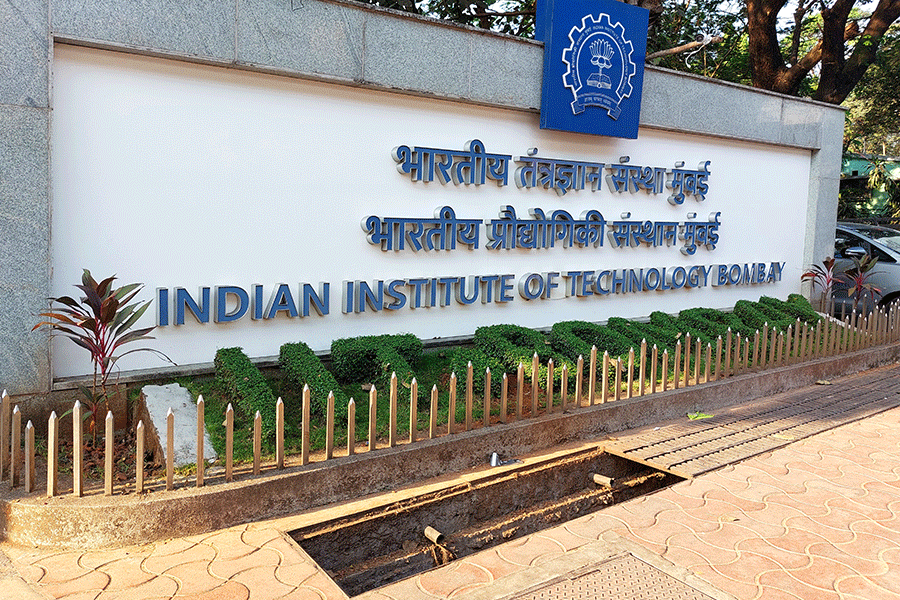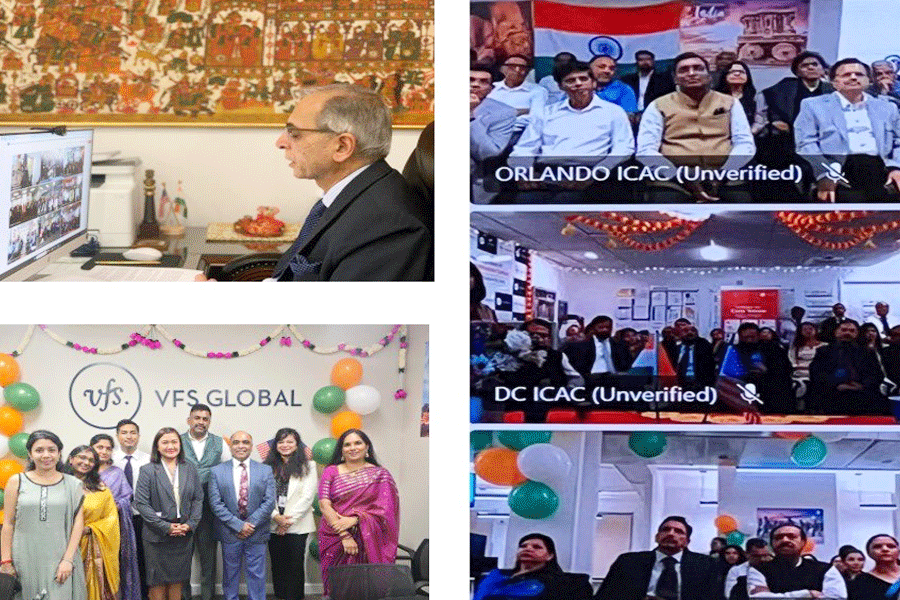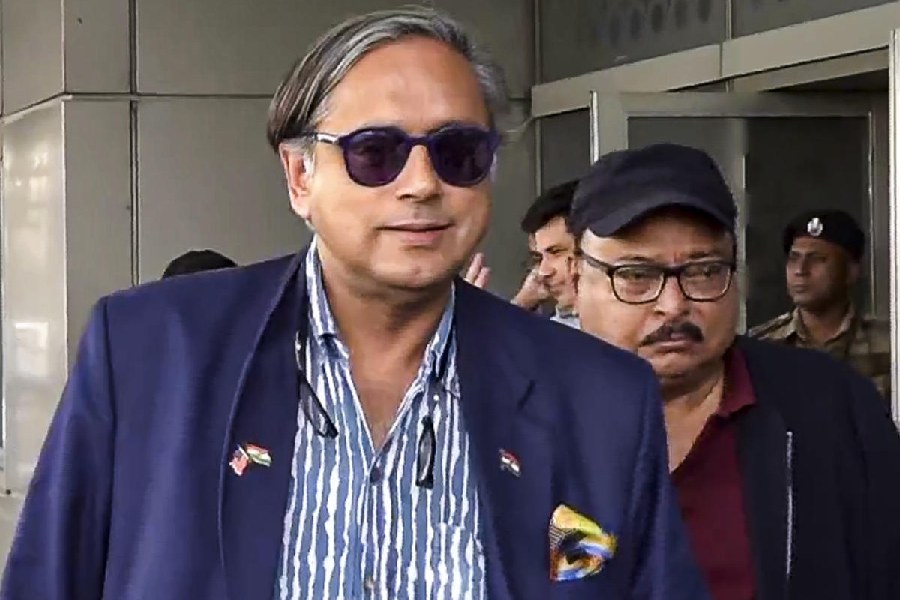 |
| Kiran Soni Gupta at The Art Gallery, ITC Sonar, which is hosting her Desert Hues collection till August 25. (Anindya Shankar Ray) |
The years 2002-03 were very bad for Rajasthan. There was a famine. As the collector of Ganganagar district, Kiran Soni Gupta was out in the affected villages, meeting people, taking stock, arranging for relief. From that experience emerged a small mixed-media artwork depicting the impact of famine on women and children. It won Kiran a National Award.
Administrator-artist-wife-mother-champion of culture, Kiran lives many lives and lives them as robustly as the bold strokes and bright colours on her canvases. Today she is principal secretary, art and culture, government of Rajasthan. Her long list of achievements includes winning a Mason fellowship to Harvard University for a master’s degree in public administration in 2005-06 and having one of her paintings exhibited at the Louvre Museum in Paris last December.
Kiran is showing a collection of 41 oils and watercolours titled Desert Hues at The Art Gallery ITC Sonar. This is her 34th solo exhibition, no mean feat for someone with a demanding day job and no formal training in the arts.
Born and brought up in Ludhiana, Kiran is one among seven siblings and attributes her art to the “creative atmosphere at home”.
“My first time was with my sister’s paints, when she had gone to the market. I was in Class VI,” smiled Kiran, a 53-year-old mother of two. Appreciation from her sister and encouragement from her father started her off on this passionate journey. “After that all my pocket money went into art supplies,” she laughed.
Then she got busy with studies and appearing for the civil services. “After joining the Indian Administrative Services (IAS, batch of 1985), I was first posted in Kerala. And Kerala is so beautiful. You can hardly hold yourself back from painting, if you have a passion for it! The nature, the seascapes, the water, the hills….”
So, when her work took her to Rajasthan in 1994, Kiran was slightly disappointed. “I thought oh, it’s a desert state, no greenery. But when I started going to the villages, I started observing people from very close quarters. I realised the desert has its own beauty.”
But her passion would have remained behind closed doors had it not been for husband Madhukar Gupta, currently the divisional commissioner, Jaipur and Bharatpur. In 2002, he booked the Taj Art Gallery in Mumbai for two days as an anniversary present and propelled her into the public realm.
“From my first show, I learnt two things. First was the feedback I received from people, from eminent artists and from the media. And second, the joy of sharing art,” said the lady whose favourite colour is red, though her present collection is resplendent in flaming oranges and golden yellows as well.
One of her most fulfilling moments as an artist and social worker was when “two of my works were sold at the Harvard Arts Festival for charity for more than $7,000.” The other high point was when her work titled Poojatime was exhibited at the prestigious Carousel (underground arena) in Louvre. “The National Society of Arts in France calls for entries from all over the world and they select one artwork per artist,” she explained.
As a civil servant, her work throws her many challenges, from managing a border district during the 2001 Parliament attack to maintaining law and order amid communal tensions in Bhilwara, or providing the administrative set-up for a massive fair like Urs. Then there are disasters like the fire in the Suratgarh arms depot that required evacuation of seven villages or the stampede in the Mehrangarh Fort temple that claimed 214 lives.
“Work comes first, art is a passion but it is secondary. But when I paint and come back to my work, I have double the energy. I am never tired. I try to understand people’s psychology, their problems, their lives, and that goes into my art as well. Many of my themes are drawn from my fieldwork — social issues, poverty, the women, the men....”
But how does she manage to do so much? “Time management,” came the quick reply. “Everything is important, your family, your career, your passions and you have to make time for each side of you.”
“Being an officer, you don’t want to be known as a lesser officer. You want to prove yourself. And when women officers are involved, I think you have to work doubly hard to prove that you are good at your job,” she added.
As culture secretary, her “most-loved” posting till date, Kiran has an additional responsibility too — promoting the cultural capital of India.
“Economics do matter, infrastructure does matter, these are your hardware, but ultimately what you create in society is your cultural capital. There’s a lot of work to do. Formulating a cultural policy, working in the government to create platforms for people to express, be it art, dance, theatre, drama… I love doing that.”










